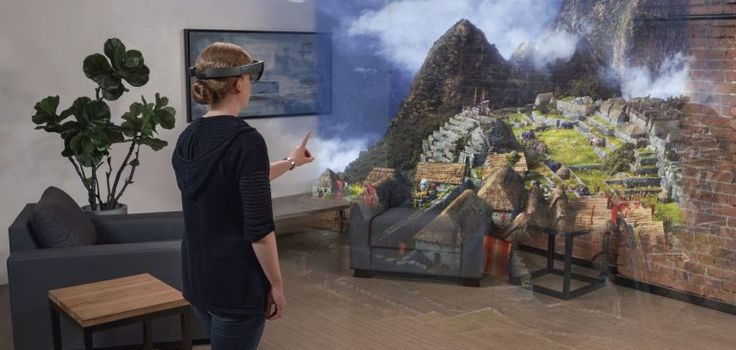
Introduction
Picture a world where you slip on a headset, log in, and instantly find yourself in a bustling virtual office or a lively social hub. This vision is no longer science fiction; it is the reality of the metaverse commute. We have moved past the early days of Virtual Reality, when clunky headsets limited our experiences. Today’s immersive technology offers realistic graphics, responsive environments, and endless possibilities.
All around the globe, companies seek flexible ways to connect employees, encourage digital collaboration, and tap into fresh talent pools. Workers dream of skipping the subway or freeway, and instead strolling into a fully rendered office space without leaving home. Beyond work, people are exploring new hobbies, forging friendships, and even investing in virtual properties. These actions have the power to blur the lines between the physical and digital worlds.
This journey into the metaverse is part of a broader shift in how we live, work, and play. In this article, we will explore the current landscape, discuss emerging trends, and delve into the practical reasons why the metaverse commute is taking off. If you are curious about the next frontier, keep reading. You might discover that your future commute involves a VR headset rather than a car.
What Is the Metaverse Commute?

The term metaverse commute refers to the practice of entering a shared, continuous virtual environment for daily tasks, socializing, or entertainment. You do not physically move from your house, but you step into an entirely digital realm. While some forms of virtual engagement have been around for years, the metaverse approach is more advanced. It blends augmented reality, virtual reality, and social connections into a dynamic space.
In the metaverse, you can experience lifelike avatars, 3D meeting rooms, and interactive tools that let you brainstorm with colleagues or attend live events. This revolution reshapes how people work. Instead of showing up at a normal office, employees or freelancers might opt to log into a VR workspace. In these digital settings, they can see and hear each other as if sharing a physical room, minus the commute. The metaverse does not stop at work. You can also relax, play games, and connect with friends around the world, bridging gaps in real time.
The Role of Technology
Technological breakthroughs power the rise of the metaverse commute. Modern VR headsets offer improved resolution and motion tracking, making interactions feel more genuine. Blockchain platforms create secure digital ecosystems for trade and virtual asset ownership, while NFT tokens certify unique items like digital art, land plots, or event tickets.
Developers also leverage 5G networks, which allow rapid data transfer with minimal lag. This means you can attend a virtual board meeting or watch a streaming concert without your avatar freezing mid-sentence. As these technologies evolve, the line between physical and digital worlds grows thinner.
Benefits for Remote Work

One of the primary motivations behind the metaverse commute is remote work. Traditional jobs often rely on video calls and text chats, which can feel impersonal. The metaverse goes further by recreating the physical presence of an office, complete with tables, whiteboards, and water-cooler banter. You do not have to worry about messy backgrounds or scheduling an in-person trip.
For companies, this means accessing global talent without geographic constraints. Team members can share ideas by sketching 3D prototypes or sticky notes.
Social and Entertainment Opportunities

Working in the metaverse is just one side of the coin. Many people use virtual reality to unwind or explore entirely new worlds. Online gaming communities pioneered this concept, creating immersive realms for players to interact in real time. Now, that same passion for connectivity flows into a broader social context. You can attend live concerts, join art exhibitions, or connect with language exchange groups—all within the digital realm.
Events that used to require expensive travel, tickets, and limited seating are suddenly accessible to a global audience. You can sit in the front row of a performance or roam around with friends from different continents. Instead of watching a stream through a screen, you become an active participant, free to interact and explore.
Metaverse Accessibility
Despite its potential, the metaverse has challenges, particularly around accessibility. Some people experience motion sickness or find VR interfaces confusing. To address these issues, developers are working on more intuitive designs, adjustable comfort settings, and cross-platform solutions.
Benefits of the Metaverse Commute

The metaverse commute brings many advantages to both work and personal life.
Enhanced Flexibility
One major benefit is flexibility. With a digital commute, you can work from anywhere and avoid long, stressful travel times. This extra flexibility can lead to a better work-life balance. People have more time to spend with family, pursue hobbies, and relax.
Cost Savings
A digital commute can also save money. For companies, lower commuting costs can lead to reduced office expenses and a more efficient workflow.
Increased Productivity
Working in a digital workspace can boost productivity. Virtual meetings can be more focused and shorter in duration. The metaverse allows for collaboration through interactive tools, making brainstorming and problem-solving more effective. Many find that the digital environment minimizes distractions and helps maintain concentration.
Environmental Benefits
The metaverse commute has positive environmental impacts. Fewer cars on the road mean reduced emissions and a smaller carbon footprint. As more people adopt virtual workspaces, the overall strain on transportation systems decreases, contributing to a cleaner environment.
Improved Social Interaction
Digital workspaces in the metaverse offer unique ways to interact. With avatars and immersive environments, you can feel more connected with colleagues and friends. Virtual social events, interactive training sessions, and creative collaborations make digital interactions engaging and fun.
Potential Drawbacks
While the metaverse unlocks numerous advantages, it also carries potential downsides. Extended VR sessions might cause eye strain or fatigue if users do not take breaks. Some worry about privacy, as immersive technology can collect detailed data on a person’s movements and interactions. If hackers access these systems, they could exploit personal information or disrupt entire virtual environments.
Much like social media, the metaverse can become addictive, or it can expose users to harmful content if not properly managed. Discussions about digital well-being, user rights, and responsible design are vital as we move forward.
Table: Traditional Office vs. Metaverse Workspace
| Aspect | Traditional Office | Metaverse Workspace |
|---|---|---|
| Commute | Physical travel (car, bus, train) | Virtual login, no physical movement |
| Costs | Rent, utilities, maintenance | VR gear, platform subscriptions, lower overhead |
| Collaboration | In-person meetings, phone calls | 3D avatars, shared virtual tools, digital collaboration |
| Flexibility | Fixed hours, location constraints | Work from anywhere, global staff |
| Social Interaction | Water cooler chats, office culture | VR commute hangouts, virtual gatherings |
| Environmental Impact | Fuel consumption, building resources | Reduced carbon footprint, less physical waste |
Education and Skill Building

Beyond work and socializing, the metaverse holds potential for education. Institutions and teachers can develop immersive lessons that place students in dynamic learning scenarios.
Organizations are also using VR for training. Healthcare professionals practice simulations without risking patient safety. Pilots refine their skills in realistic flight conditions. Retail staff learn to manage store layouts and customer interactions. The interactive nature of VR can help learners remember and apply information more effectively compared to traditional methods.
Investing in the Metaverse

People are beginning to treat metaverse environments like real economies. Virtual land sales, property rentals, and even digital shops are on the rise. Some see these virtual spaces as valuable long-term investments, akin to buying land in a developing neighborhood. Owning property in the metaverse can mean hosting events, building storefronts for digital goods, or running a virtual café where avatars meet.
As blockchain technology and NFT markets expand, digital ownership becomes more secure and verifiable. Investors can buy unique items or spaces that nobody else can replicate. This blends creative freedom with the potential for profit. However, as with any investment, it carries risks. Values can fluctuate, and the technology is still evolving, so caution and research are essential.
Tips for a Successful Metaverse Commute

You do not have to be a tech guru to begin exploring the metaverse commute. Start with a user-friendly VR headset, or try free online platforms that offer a taste of virtual environments without specialized gear. Look for community events or tutorials that guide new users through setup.
Once you are comfortable, set goals for what you want to achieve. Maybe you want a more immersive work-from-home experience, or you are eager to attend concerts with worldwide fans. Identify trusted platforms with reliable support and a robust community. Be mindful of your posture, eye health, and general comfort. It is easy to lose track of time in these vivid worlds.
If you plan on investing in virtual property or NFT items, do thorough research. Learn about the platform’s stability, community size, and reputation. Protect your digital assets with secure wallets and follow guidelines to avoid scams.
Future Outlook

The metaverse shows signs of expanding into nearly every corner of modern life. As hardware becomes more affordable and user-friendly, a broader population can step into these realms.
Potential breakthroughs may include full-body haptic suits or advanced gesture recognition, offering near-tangible experiences. People could pick up virtual objects, shake hands with colleagues, or sense environmental changes like a virtual breeze. This evolution might soon make the VR commute feel as natural as flipping on a computer or checking a phone.
Conclusion
The metaverse commute is not just a Passing Trend. It is a cultural shift in how we work, learn, and socialize. By mixing virtual reality with everyday life, we unlock new ways to connect, reduce environmental impact, and explore innovative opportunities. Yet we must remain vigilant about data privacy, accessibility, and overall health.






































































